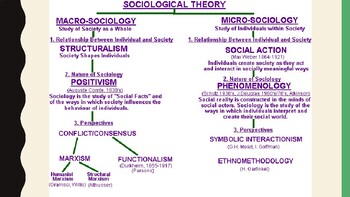Conflict Debate in the Criminal Justice Systemt Essay by dissertation College Undergraduate A February 2010 download word file 4 pages download word file 4 pages 50 1 votes. The goal of the criminal justice system is to enable people to fit into social institutions.
 Sociological Theory Consensus Versus Conflict Theories Sociology Theory Methods Youtube
Sociological Theory Consensus Versus Conflict Theories Sociology Theory Methods Youtube
Peak 2007 7The Consensus versus Conflict Debates history goes back to the Constitution to hold the three separate entities together.

Consensus vs conflict theory criminal justice. Ultimately the differences in these models culminate in the actual purpose for a criminal law code. Consequently consensus and conflict theories differ in their main goals and means. In the consensus model criminal law is made by and serves the whole of society.
Basically the consensus viewpoint holds that all parts of the system work toward a common goal. Conflict Debate in the Criminal Justice Systemt Essay Sample The criminal justice system in the United States is hampered by the separate and uncoordinated mechanism of the police enforcing the laws emphasize community protection courts weighing peoples rights versus community needs and corrections systems conflicted between punishment and rehabilitation. Conversely the conflict theory holds that agency agendas create self-serving motives promulgated by outside self-interest groups like MADD or the public at large like.
Although the police and courts are completely independent of each other they must rely on each other to fulfill their objective for corrections to punish criminals. Conflict a few elites are in control of the laws and use them to control society. Assessment of the Consensus vs.
While consensus theory may be blind to social injustice conflict theory begs to differ as it intends to fight for social justice in accordance to communist or socialist views. INTRODUCTION A comparison of the consensus and conflict models of the criminal justice process The reasons for case attrition A definition of the exclusionary rule and your opinion of it. In contrast conflict theories many of which have their roots in Marxism view society as fundamentally unjust.
CONSENSUS VS CONFLICT MODEL OF THE CRIMINAL JUSTICE SYSTEM Clayton Thrasher CJS 220 May 28 2016 Kenneth Jack Breiden. When considering how these two apply to viewing criminal justice as a system it is quite simple. The consensus model of criminal justice assumes the systems components work together to achieve justice while the conflict model assumes the components serve their own interests and justice is the product of conflict according to StudyMode.
Conflict and Consensus Reconceived A central theme in our discussion is that there may be more to conflict and consensus than either group of theorists frequently suggests. The conflict model focuses on preserving the rights of the people while the consensus model focuses on public safety Cronkhite 2013. Rational choice theory maintains that these resources are distributed in accordance with the need for crime control whereas conflict theory argues that they are allocated with the aim of.
Consensus vs Conflict Theory in the Criminal Justice System Consensus the criminal justice system and society are in agreement and the laws follow the beliefs and ideas of the people. However in the conflict model the purpose of the criminal justice system is to maintain economic and political control by the dominant class. Thus con-flict criminologists tend to see authority-subject relations almost.
The conflict and consensus models are two parallel models that work toward furthering the protection of society. Consensus and conflict viewpoints. Consensus theories posit that laws and rules are created through a group process using rational thinking to determine what behaviors should be considered deviant andor criminal to protect society.
Consensus theorists seek for the integration of norms and values. Consensus theorists tend to see minority or dissident groups as troubling given that they can upset the social structure and cause unrest. Assessment of the Consensus vs.
Halaman
Monash
Labels
-
Using this same intelligence children possessing enhanced levels of nature smarts may be very interested in human behaviors or the behavior...
-
Read all the questions BEFORE you read the passage. Diagnostics placement and demographic analysis. Compass Reading Test Success Compass ...
-
A psychology major usually has you taking 1-2 semesters of general psychology where you learn a little bit about the major subfields - biol...
-
Games printables and tips will help you learn and remember students names. This activity can be structured a number of ways. English Esl ...
-
Only the nursing regulatory body to which you applied can release your official results which will be sent to you approximately six weeks a...
